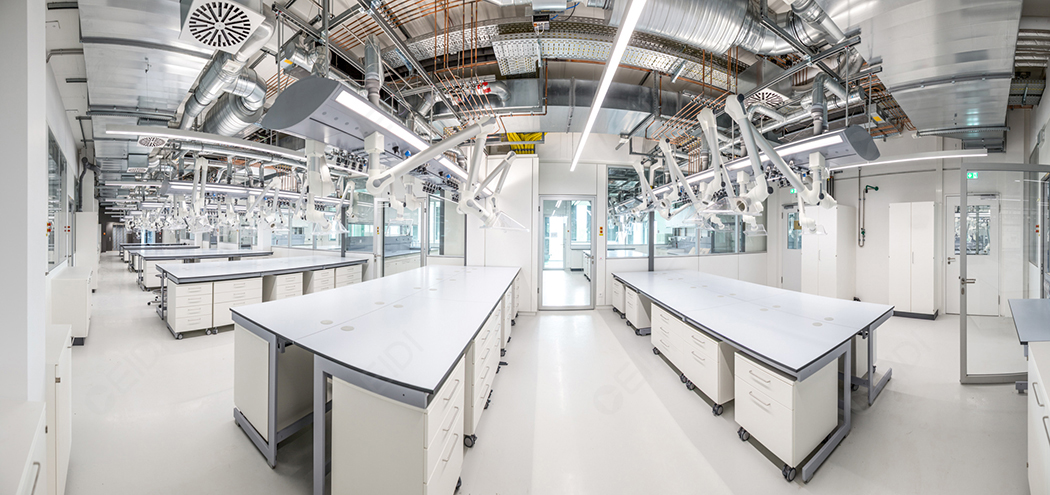Welcome to the official website of Xidi laboratory, the laboratory design and decoration recognize Xidi!
|
|
Home >> News >> Technology
文章出处:Technology|阅读量:712|发表时间:2021-03-09
The laboratory is different from other building bodies because its functionality is a place with a certain risk, especially the risk coefficient of biological safety laboratories, chemical laboratories, explosion-proof laboratories, etc. Potential risks can be talked about for several days and nights. Therefore, in the early stage of the construction of professional properties such as laboratories, it is necessary to predict the risks that may occur. These also test the designer's experience and skills; in the mid-term, the design plan must be more demonstrated; in the later stage of the construction The practical experience of the project manager and construction team is also particularly important. In this article, CEIDI will discuss the relevant potential risks of the laboratory with you, and share relevant risk response measures.

Eight types of potential risks in the laboratory
1. Explosive incineration
Such hazards are common in chemical laboratories, mainly due to direct explosions caused by chemical reactions, but also due to gas leakage or overflow due to external force or temperature explosion or fire.
2. Corrosion
Such hazards can cause corrosion to human skin, eyes, respiratory tract, etc., and seriously threaten the health of workers.
Our common sources of danger are acid-base reagents.
3. Burns
Some high temperature chemical reaction and high temperature heating experiments will pose a safety threat to humans, and experimenters may suffer high temperature burns and scalds due to various reasons.
4. Frostbite
In the low-temperature freezing process, for example, the temperature of liquid nitrogen is -196°C, you must wear cold-proof gloves when handling liquid nitrogen, otherwise it will be extremely frostbite. In addition, there are some special refrigerants, etc., which may cause frostbite to the skin due to a little careless operation.
5. Electric shock
Electric shock accidents in laboratory electrical equipment. The cause of electric shock is generally broken wire, failure of leakage protection, broken ground wire, no grounding protection, non-safe voltage selection, etc.
6. Poisoning
There are many toxic and harmful drugs in the laboratory, and poisoning incidents often occur, which are basically caused by accidental ingestion and accidental contact.
7. Infection
Laboratory staff are at risk of being infected due to a slight carelessness in close contact. Infection refers to the local tissue and systemic inflammation caused by pathogens such as bacteria, viruses, fungi, and parasites invading the human body. The risk of infection is usually more common in biological laboratories or medical laboratories.
8. Chronic diseases
There have been analyses in foreign countries. The average life expectancy of a person working in a laboratory is 10 years less than that of ordinary environmental workers. A large part of this is caused by various toxic and harmful gases, various acousto-optic electromagnetic and radiation pollution.
Measures to respond to laboratory risks: Strengthen safety training and education of personnel, and improve safety awareness
Laboratories have heavy responsibilities and are inherently high-risk places. Therefore, in addition to strengthening safety training for laboratory personnel, effective safety mechanisms should be established and standardized for experimental safety issues. Through regular and continuous safety training, laboratory operators are proficient in basic safety knowledge and safety self-rescue skills. This part of the content includes: pre-job training, safety knowledge education, escape and self-rescue exercises, learning and practicing first aid measures, etc.
The measures to deal with laboratory risks are to attach importance to the qualification of the design and construction unit and grasp the hardware construction
From the perspective of laboratory design, decoration and supporting integrated services. To reduce the risk of explosion, fire, electric shock, poisoning, etc., hidden dangers should be eliminated to the greatest extent possible from the design and construction stage of the laboratory. The burden of eliminating hidden dangers to the greatest extent falls on the unit that designs and builds the laboratory. The design and construction unit must have excellent qualifications. Ordinary tooling design and decoration units cannot bear this heavy responsibility. Vague qualifications are one of the hidden safety hazards. Only with complete qualifications and more relevant cases can we have enough experience to reduce disaster risks through careful layout design and precision construction. Experienced designers understand the specifications, pay special attention to the specification of laboratory safety early warning devices and fire-fighting equipment, standardize the construction of laboratory water, electricity, gas, ventilation and other systems, and standardize the classification of various reagents or flammable and explosive materials. Storage, discharge and treatment of various wastes or toxic substances, eliminate hidden safety hazards in the laboratory in the budding state.
"In general, laboratory design and construction are the first protective shield for all laboratories to conduct research safely", CEIDI Xidi engineer said: "As a laboratory design contractor, "consolidate our own skills and ingenuity. "Engineering" is the basic quality that every responsible construction unit should have.